Windows are an essential component of any building, providing natural light, ventilation, and protection from external elements. However, window glass can become damaged or compromised over time, leading to decreased efficiency and potential safety hazards. In this exploration of window glass repair, we will dive into the various types of window glass available, the common causes of damage, and the techniques used for repairing the glass. Additionally, we will discuss the pros and cons of DIY vs. professional services, the importance of safety precautions and window frame maintenance, and the role of window glass in energy efficiency.
Types of Window Glass for Homeowners
Window glass repair is a service often sought by homeowners to maintain the functionality, appearance, and energy efficiency of their windows. One of the essential aspects of window glass repair is understanding the various types of window glass available, including their properties, benefits, and potential drawbacks. By becoming familiar with these different window glass types, you can make informed decisions when repairing or replacing your home’s windows.
Single Pane Glass Windows
As the name suggests, single pane glass windows consist of only one pane of glass. This type of glass provides basic insulation and protection from the elements, but it might not be the most energy-efficient choice for homes in regions that experience extreme temperatures. Single-pane glass windows tend to be more affordable, but they may not be the best option for those looking to save on energy costs or reduce noise pollution, as they do not insulate as effectively as other glass types.
Double Pane Glass Windows
Double pane glass windows, also known as insulated glass units (IGUs), consist of two panes of glass separated by a spacer, filled with air or inert gas such as argon or krypton. This design offers better insulation than single-pane windows, as the gas acts as a barrier to conductive heat transfer and helps reduce heat loss or gain. Double pane glass has become a popular choice for homeowners because it dramatically improves energy efficiency and reduces noise pollution. However, this higher performance glass type can also come with a higher price tag than single pane glass and may require more complex repairs if damage occurs.
Triple Pane Glass Windows
Triple pane glass windows have three panes of glass separated by spacers, with either air or inert gas filling the spaces between. These windows provide even better insulation than double pane glass and significantly reduce noise pollution. Triple pane windows are highly energy-efficient, making them a popular choice for those living in extreme climates or seeking top-of-the-line energy efficiency. As with double pane glass windows, the downside is the higher cost, both upfront and for repairs, compared to single-pane windows.
Low-E Coating
Low-E (low-emissivity) coating is another type of window glass technology that can improve the energy efficiency of your home. Low-E coatings are thin, nearly invisible layers of metal oxide applied to window glass to reflect heat while still allowing light to pass through. Low-E coated glass can be found in single, double, or triple pane windows, further enhancing their insulating capabilities. These coatings can help keep your home cooler in the summer and warmer in the winter, reducing energy costs if appropriately maintained and repaired.
Understanding the differences between various types of window glass, such as single-pane windows or multi-pane windows with advanced coatings like Low-E, is crucial for selecting the most suitable glass for your home and being aware of the repair and maintenance needs associated with each type. Each glass type presents unique challenges and advantages when it comes to window glass repair and ensuring optimal energy efficiency in your home.
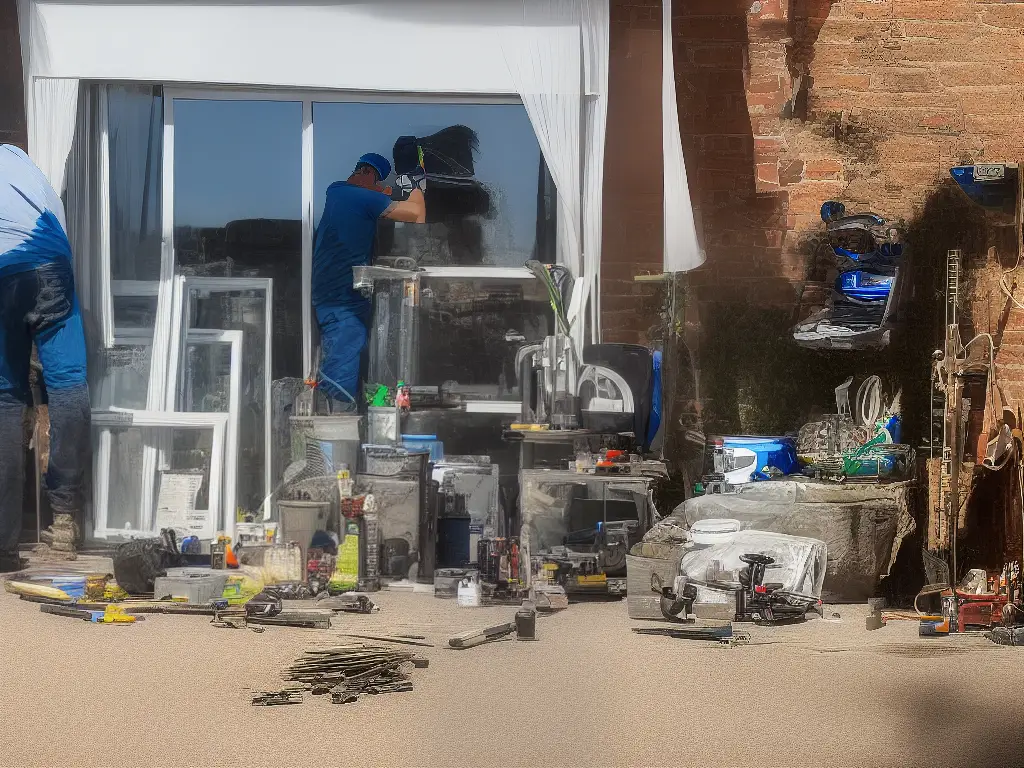
Factors that Contribute to Window Glass Damage
Beyond selecting the most suitable glass type, it is also vital to be aware of common causes of window glass damage, such as impact from flying debris, accidents involving cars, or intentional break-ins. An impact on your window glass can lead to cracks or even complete shattering, compromising the window’s integrity. To prevent further damage, it is crucial to address any impacts on your window glass promptly by contacting a professional glass repair service. These professionals can assess the damage and determine whether a repair or complete replacement is required for the window.
Another factor leading to window glass damage is temperature fluctuations. Glass expands and contracts with temperature changes, and over time, this stress can cause the glass to crack or weaken. Windows in regions that experience extreme temperature changes, such as hot summers and freezing winters, are particularly susceptible. To protect your windows from extreme temperature fluctuations, you can use heavy-duty weatherstripping and insulation. Furthermore, upgrading to double-pane or insulated glass can minimize the risk of damage caused by temperature changes.
Water damage is a less obvious but equally important factor contributing to the degradation of window glass. Moisture can seep into the edges and joints of a window, causing the sealant to break down and allowing water to enter the layers of the glass. This could lead to the glass becoming foggy or developing stains, and eventually, compromising its durability. To reduce the risk of water damage, it is essential to inspect and maintain the caulking around your windows regularly. If there are any gaps or cracks, be sure to have them filled or replaced by a professional.
In addition to the factors mentioned above, poor installation, low-quality materials, and age can also contribute to window glass damage. Windows installed incorrectly or made from inferior materials will be subject to accelerated wear and tear, reducing their lifespan. To prevent this, it is essential to choose high-quality glass for your windows, and to work with experienced and reliable professionals for their installation. Regular maintenance and inspection can also help to identify any issues early on, ensuring the longevity of your windows.
Being aware of various factors causing window glass damage is crucial so that you can take appropriate preventive measures and address any issues promptly. By doing so, you can save yourself the time and money that would otherwise be required to deal with significant repairs or replacements. Choosing the right kind of glass, ensuring proper installation, and performing regular inspections can protect against factors such as impact, temperature fluctuations, and water damage.

How to Repair Common Window Glass Issues
Among the common types of window glass damage, scratches can often be effectively dealt with using glass polishing kits. These kits typically contain a cerium oxide compound that acts as an abrasive, removing the scratch and restoring the glass to its original clarity. To repair scratches, start by cleaning the glass thoroughly. Next, apply the cerium oxide compound to the affected area, and proceed to polish the glass with a specialized pad or electric drill attachment. With proper technique, light to moderate scratches can be successfully removed from the glass surface, maintaining the integrity and appearance of your windows.
Another common issue faced by window glass is the presence of cracks. Repairing cracks can be more challenging than fixing scratches, but it is still possible using a glass repair kit or a resin-based filler. Glass repair kits typically include a special injector tool that helps to insert the resin into the crack, a stabilizing clip to maintain the correct pressure between the glass surfaces during the curing process, and a UV light to accelerate the hardening of the resin. By filling the crack with a clear and durable resin, the stability of the glass can be restored, and the appearance of the crack diminished.
In the case of larger cracks or shattered glass, the repair process will likely involve the removal and replacement of the damaged glass pane. This process requires specialized tools such as a glass cutter, suction cups, caulking gun, and glazing compound or caulk. The first step in replacing a broken pane is to carefully remove the damaged glass, followed by cleaning the frame and surrounding area. After preparing a new piece of glass to fit, the replacement pane is secured with either glazing compound or caulk, and the window frame is reassembled.
When dealing with double-pane windows that have suffered from seal failure or damage, the repair process often requires the expertise of a professional. Repairing a broken seal in double-pane windows typically involves extracting the gas or air between the panes, resealing the window unit, and injecting a new gas or air to restore the window’s insulating properties. This process requires specialized equipment and knowledge, so it is often best to consult with a qualified window repair technician.
Ensuring safety and using the proper tools and materials are key aspects when it comes to window glass repair. Wearing appropriate protective gear such as gloves, safety goggles, and long sleeves is essential to avoid any accidents during the repair process. Being knowledgeable about the various techniques and considerations for repairing window glass can help homeowners maintain the appearance and functionality of their windows while minimizing the need for costly replacements.
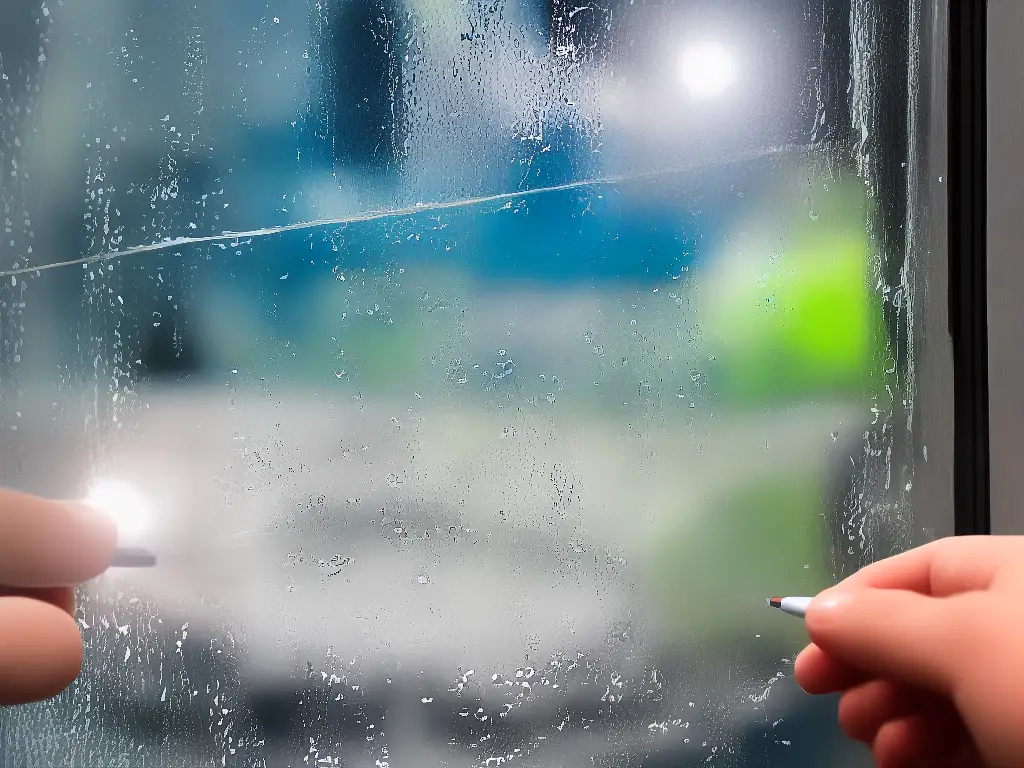
DIY vs. Professional Window Glass Repair: Factors to Consider
Deciding whether to perform window glass repair on your own or to hire professional services can be a challenging decision. Both methods have their own advantages and disadvantages, and factors such as cost, time, and expertise must be taken into account. In this article, we will discuss the most important aspects of DIY glass repair versus hiring a professional, making it easier for you to make an informed decision on the best approach to tackle your window glass repair projects.
Cost
One of the most important factors to consider is the cost of repairing the glass. At first glance, DIY repair seems like an economical choice since it eliminates the labor costs associated with hiring a professional. However, there are hidden costs to consider, such as the necessary tools and materials you will need to purchase. Additionally, if a mistake is made during the repair process, it could lead to more expensive repairs or even the need to replace the entire window. On the other hand, hiring a professional may have higher upfront costs, but you are paying for their experience, skill, and knowledge which can lead to higher-quality results and prevents potential issues down the line.
Time
Time is another important factor to consider when deciding between a DIY approach and hiring professional services. Completing a window glass repair project by yourself might take a considerable amount of time, especially if you lack experience or are attempting to learn the process as you go. In contrast, hiring a professional ensures that the window repair will be completed in a timely manner, allowing you to focus on other tasks. Keep in mind that professionals may also have access to special equipment and tools that enable them to complete the job more efficiently and effectively.
Expertise and Experience
Expertise and experience are the key factors that set the professionals apart from do-it-yourselfers. There is a learning curve associated with window glass repair, and attempting to complete a repair without the necessary knowledge and skills can lead to unsatisfactory results or even further damage to the window. Hiring a professional guarantees that they have the knowledge, skillset, and experience to correctly assess and repair the glass. Moreover, professionals are familiar with the best practices and can provide guidance for future maintenance and care to ensure the longevity of the repaired glass.
Safety
In terms of safety, professional services usually have a clear advantage. Window glass repair can involve handling broken or sharp glass, which can pose a risk of injury if not handled properly. Professionals have the necessary equipment and experience to handle these situations safely and efficiently, reducing the risk of accidents. Additionally, professionals are often insured and bonded, which provides additional protection in case of accidents or damage during the repair process.
In conclusion, both DIY and professional services have their own advantages and disadvantages when it comes to window glass repair. Factors such as your budget, time availability, and the level of expertise required for the specific repair should all be carefully considered when making your decision. Weighing these factors can help ensure that you choose the right approach for your window repair needs, ultimately leading to a more successful and satisfactory outcome.
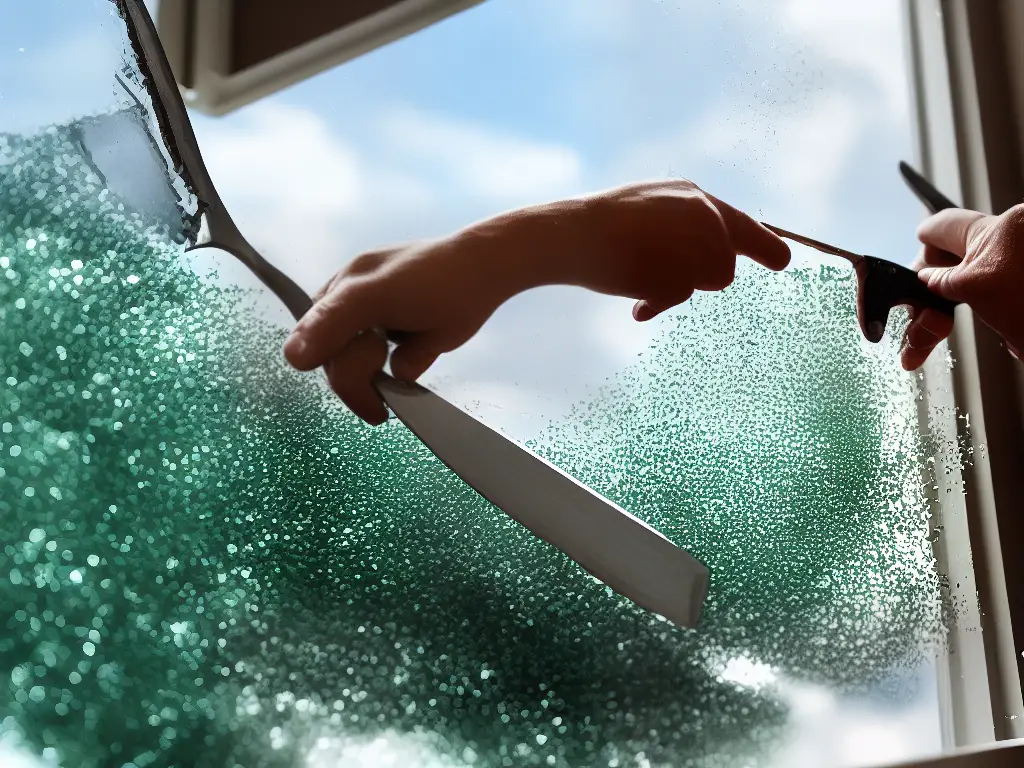
Important Safety Precautions for Window Glass Repair
Regardless of the approach you choose, one crucial aspect of window glass repair is understanding and adhering to the necessary safety precautions to minimize the risk of injury while handling the delicate material. Ensuring that safety remains a priority in both DIY and professional repairs is essential for a smooth and successful process.
To begin with, it is important to wear personal protective equipment (PPE) during the entire process. This generally includes safety glasses, which protect the eyes from potential flying glass shards, gloves to protect the hands from accidental cuts, and closed-toe shoes to prevent injuries in case a glass piece falls to the floor. Additionally, it is a wise practice to don a long-sleeved shirt to shield the arms from any potential cuts or abrasions that may occur while handling the glass.
Proper handling techniques form the crux of safety precautions for window glass repair. When picking up a piece of glass, always hold it firmly by the edges to prevent unwanted cracks or breakage. While carrying a large sheet of glass, it is best to seek assistance from another person rather than struggling to maneuver the heavy weight alone. In addition, placing a piece of cork or rubber on each corner of glass panes protects them from damage and prevents potential injuries due to sharp edges. Moreover, it is advisable to use reliable and functional tools – like glass cutters, suction cups, and glass pliers – to ensure accurate and safe handling during repairs.
When removing broken glass, it is essential to exercise utmost caution, especially when dealing with shattered pieces. Before commencing repair work, clear the area of all people and pets who could inadvertently encounter the broken glass. It is also prudent to lay a drop cloth or tarp on the floor to catch the broken glass and simplify cleaning after the repair is complete. In case a window glass shard gets lodged within the frame, use pliers with a firm grip to remove it safely without risking further damage or injury.
Another vital consideration during window glass repair is the proper disposal of broken glass. Rather than throwing the shattered pieces directly into the trash, wrap them in several layers of newspaper or place them in a sturdy cardboard box. This not only secures loose shards but also protects waste handlers and scavengers from accidental injuries. Moreover, it is essential to label the box as ‘broken glass’ to inform others about the potentially hazardous content inside.
When it comes to window glass repair, it is essential to be aware of one’s limitations and expertise. While minor repairs may seem manageable for someone with basic skills, complex and extensive damages require the knowledge and skill of a professional. Hiring an expert to address these issues ensures that the repair work is accurately and securely executed, ultimately helping to maintain the safety and integrity of the property.
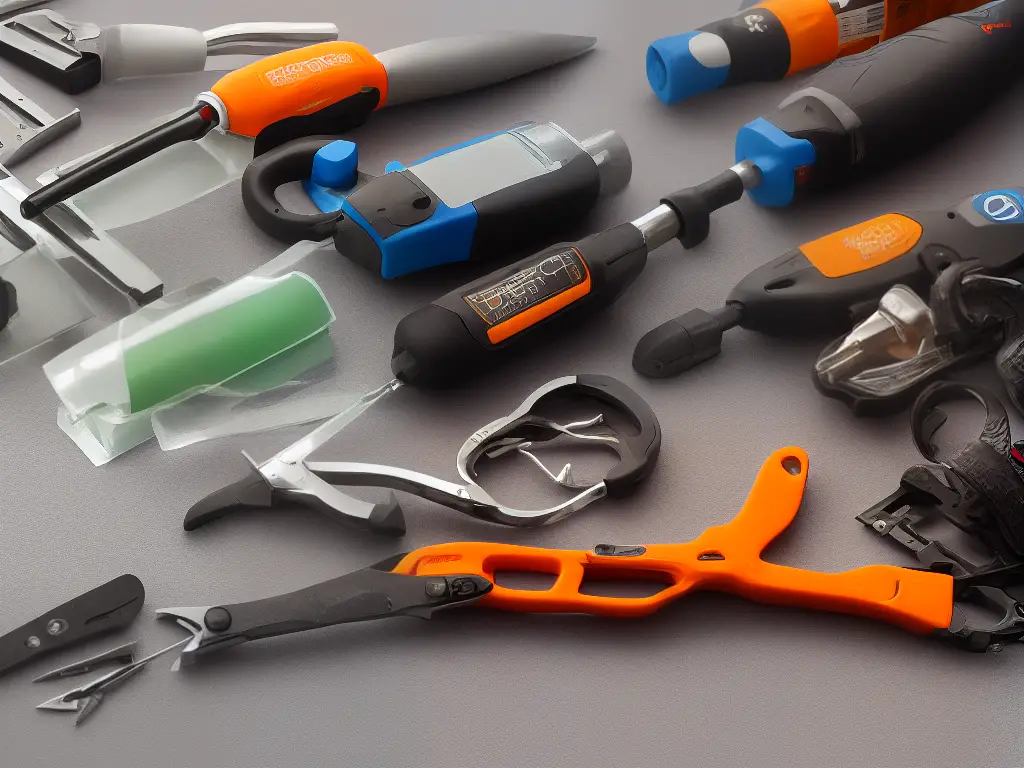
The Importance of Regular Maintenance and Repair of Window Frames
In addition to the importance of professional assistance, regular maintenance and repair of window frames are crucial aspects of preserving the overall quality and functionality of window glass. These frames provide support and protection against various environmental factors, such as temperature fluctuations, moisture, and general wear and tear. As a result, window frames can experience problems like rot, cracked seals, and damaged hardware, making their timely maintenance essential to maintaining the integrity and appearance of the window glass.
Addressing these problems promptly helps prevent drafts, water leaks, and increased energy costs, while also enhancing the durability and efficiency of the window glass.
Window Frame Rot
Window frame rot mainly occurs in wooden window frames due to prolonged exposure to moisture and can weaken the overall structure of the window. Severe rot can cause gaps between the window frame and glass, leading to air infiltration, water leaks, and ultimately reduced energy efficiency. To repair rotted window frames, it’s essential to remove the affected area, treat the remaining wood with a wood preservative, and fill the area with epoxy filler or wood patches to restore its strength and stability. Regular inspection for signs of rot, and proper sealing and painting of wooden frames, can prevent future occurrences of this problem.
Cracked Seals
Cracked seals in window frames can not only endanger the structure of the window glass but also result in drafts and increased energy bills. To address this issue, it’s essential to remove the old sealant carefully, clean the area thoroughly, and apply a fresh layer of high-quality silicone caulk. Maintaining proper sealing around the window glass helps maintain a consistent temperature indoors and prevents moisture from seeping into the frame materials. This eventually results in a longer lifespan for both the window frame and glass.
Damaged Hardware
Damaged hardware, such as handles, hinges, and locks, can significantly impact the functionality and security of the window glass. Repairing or replacing faulty hardware is essential to ensure smooth operation and prevent potential damage to the window frame or glass. In most cases, it’s a simple process of removing the old or damaged hardware, cleaning the area, and installing new components. Regular inspection of window hardware and timely replacement can help avoid more severe problems in the long run.
Proper window frame repair and maintenance can significantly improve the overall performance and life expectancy of window glass. Taking the time to repair common issues such as rot, cracked seals, and damaged hardware not only ensures the overall structural integrity of the window system but also offers benefits such as increased energy efficiency, better security, and improved appearance. Regular inspection and timely repairs of window frames should be considered an essential aspect of home maintenance to maximize the longevity of window glass and maintain a comfortable indoor environment.
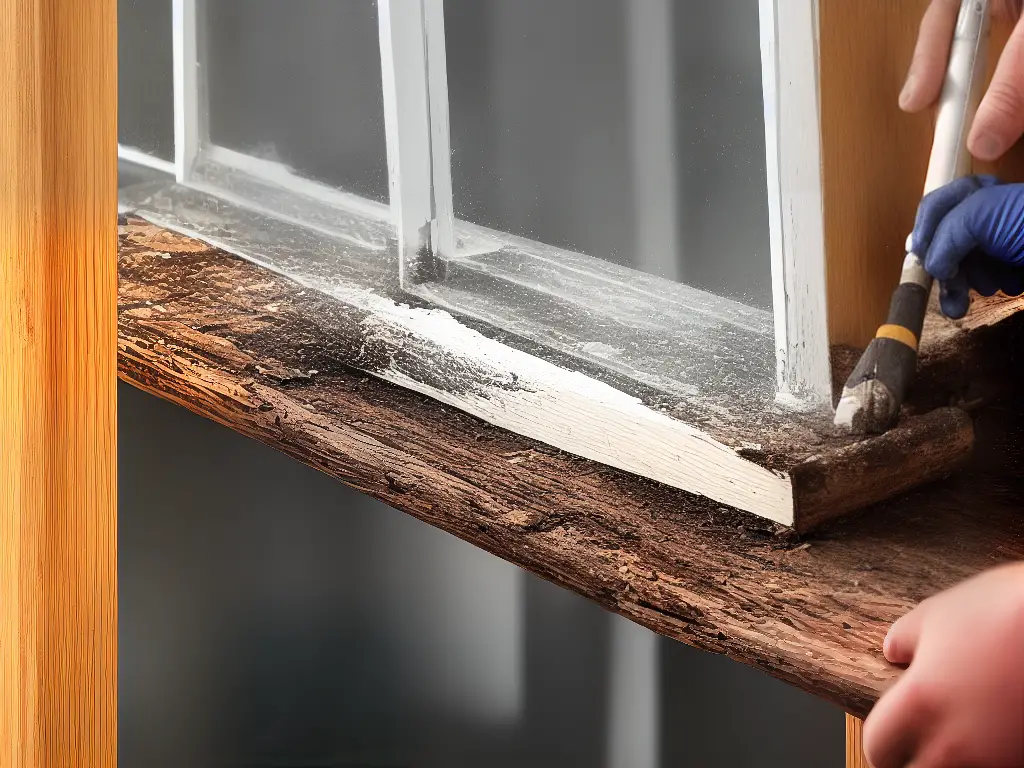
Improving Window Glass Energy Efficiency
In addition to regular window frame maintenance, the performance of window glass also greatly affects a building’s energy efficiency. Windows play a significant role in regulating heat transfer between the interior and exterior of a building, which can greatly impact overall energy consumption. To enhance the energy efficiency of windows and further extend their lifespan, it is essential to consider materials and techniques that enhance thermal performance, such as low-emissivity (low-E) coatings, gas-filled window spaces, and proper sealing. By combining regular window frame maintenance with energy-efficient window glass innovations, homeowners can reap numerous benefits for their home’s comfort and energy consumption.
Low-emissivity coatings are a popular option for improving the energy efficiency of window glass. Applied to the surface of the glass, these thin metallic coatings help to minimize the amount of heat that enters or exits a building through the windows. In colder climates, low-E coatings can trap heat inside the building, reducing the need for additional heating in winter months. Conversely, in warmer climates, these coatings can reflect heat away from the building, decreasing the need for air conditioning. When it comes to window glass repair, it is important to ensure that low-E coatings are properly applied and maintained for optimal performance.
Gas-filled window spaces are another effective way to improve a window’s thermal performance. In double or triple-pane windows, the spaces between the glass panes can be filled with inert gases such as argon or krypton. These gases have lower thermal conductivity than air, which means they slow down the transfer of heat between the panes, providing better insulation. When repairing or replacing window glass, it is essential to make sure that the gas-filled spaces are properly sealed to maintain their effectiveness.
Proper sealing is crucial in maintaining the energy efficiency of window glass. Windows can develop gaps or cracks over time, which can lead to drafts and increased heat transfer. By addressing these issues through regular maintenance and timely repairs, the energy efficiency of a building can be preserved. Methods such as weatherstripping, caulking, and insulating window frames can help ensure a tight seal and prevent air leakage.
Being attentive to the thermal performance of window glass in a building is essential for overall energy efficiency. Low-emissivity coatings, gas-filled window spaces, and proper sealing all contribute to reducing heat transfer, which ultimately leads to less energy consumption and lower utility bills. By prioritizing window glass repair and maintenance, property owners can significantly improve their building’s energy efficiency.

The Process of Window Glass Replacement
One important aspect of enhancing energy efficiency and maintaining a building’s appearance and functionality is window glass replacement. Having a clear understanding of the glass replacement process not only helps make informed decisions when repairing or renovating, but also ensures the work carried out is safe and efficient. Thus, investing in regular repairs and maintenance can greatly benefit the building owner and occupants alike.
One of the first steps of the process is accurately measuring the damaged glass to ensure that the appropriate size of replacement glass is purchased. This is typically done by measuring the height and width of the glass within the window frame with a tape measure, and it’s always a good idea to double-check these measurements for accuracy.
Selecting the proper type of glass for your project is another crucial factor to take into consideration. There are several types of glass available, each with its unique characteristics and benefits. For example, single-pane glass is widely used for its affordability and ease of installation, but it is less energy-efficient than other options. Double-pane glass, on the other hand, has two layers of glass separated by a layer of inert gas, which increases its insulation properties and can help reduce energy costs. Laminated glass is a popular choice for its additional safety and security features, as it is constructed with a layer of plastic sandwiched between two panes of glass, making it more difficult to break.
Once the correct size and type of glass have been chosen, it’s time to install the new glass safely and effectively. This may involve removing the damaged glass from the window frame by carefully chipping away any remaining glazing putty and loosening the glazier’s points (small metal supports that hold the glass in place). Always remember to wear protective gloves and safety goggles during this part of the process to protect against any shards of broken glass. Once the damaged glass has been removed, the window frame should be cleaned, and new glazier’s points and putty should be applied to secure the new glass in place.
It’s important to ensure that the replacement glass is installed securely and is sealed against the elements. This can be achieved by using a suitable glazing compound, which will form a weatherproof seal around the glass. Once the new glass is in place, the glazing compound should be applied evenly around the edges, pressing it firmly into any gaps or voids to create a watertight seal. This will not only help keep your home comfortable by preventing drafts and heat loss but will also protect your window frames from damage caused by water infiltration.
Repairing damaged window glass can be a complex task that involves several tools and techniques to ensure a professional-looking result. To tackle your window glass repair project with confidence and precision, it is important to familiarize yourself with tools such as glass cutters that can trim the replacement glass to the exact size, and glazing tools that help create a smooth surface when applying glazing compound. In addition, selecting the right materials for your specific needs is essential to make the process more efficient and effective.
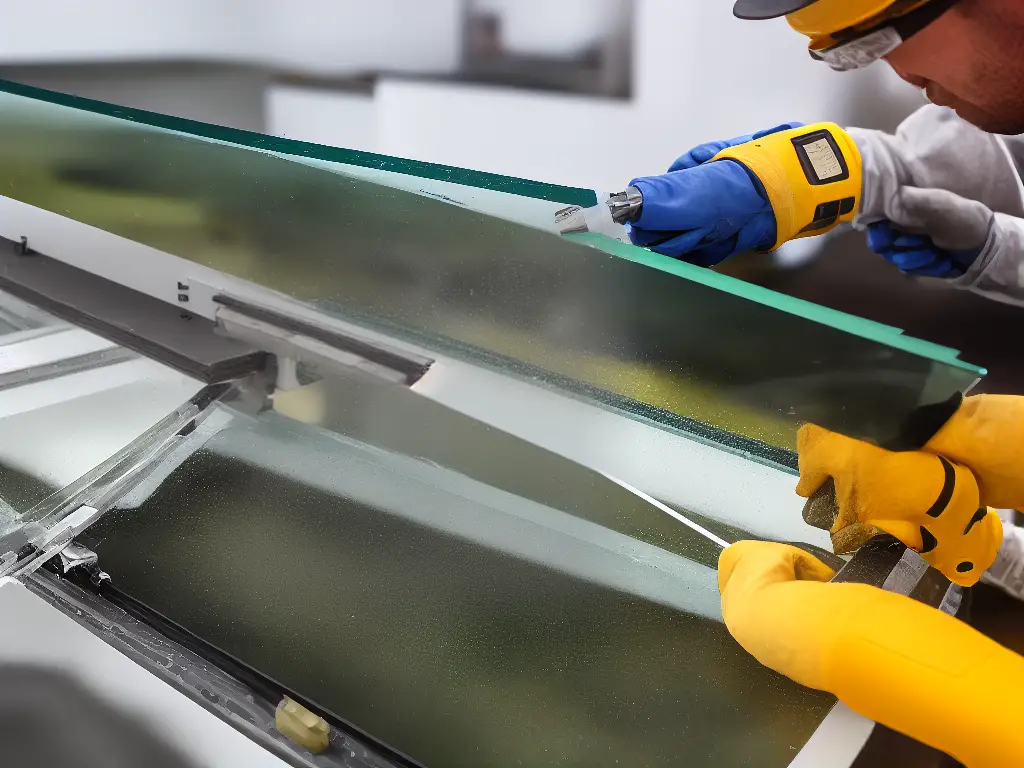
Window Glass Repair: Tips for Working with a Professional Company
Involving a professional company for window glass repair is integral to ensuring that the job is done efficiently and correctly. To identify the best service provider for your needs, start by researching local companies and seeking recommendations from your social circle, whether they be friends, family or online reviews. By carefully considering your options, you’ll be able to hire a reputable company for your repair project.
Make a list of potential providers and evaluate them on factors such as experience, expertise, licensing, and insurance. Ensure the chosen company specializes in the type of window repair you require, whether it’s residential or commercial, single-pane or double-pane glass, or a specific type of window material.
Once you have narrowed down the list of potential companies, request estimates for the repair cost. Some providers may offer a free on-site evaluation to accurately assess the necessary work and provide an accurate quote. Compare these estimates and take note of the details, such as the materials used, warranty information, and how long the job will take. It’s essential to find a balance between quality and affordability, and not just opt for the lowest quote without considering the competency of the provider.
Before hiring a window glass repair professional, ensure that you have a clear understanding of their proposed work plan. Communicate your specific needs and expectations to guarantee that they can meet them and avoid any misunderstandings or disappointments. Establish a clear timeline for the project, including any deadlines you need to meet. Make sure their schedule aligns with yours to avoid any conflicts and inconvenience during the repair process.
In addition to settling on a work plan, it’s crucial to check the terms and conditions of the contract before signing on the dotted line. Thoroughly read through to ensure all aspects of the project are covered, including materials used, installation procedures, payment terms, and warranties. Pay attention to any clauses about changes to the project or additional fees that may arise. A written contract is critical as it serves as legal protection for both the client and the service provider in case any disputes occur.
During the window glass repair project, maintain open communication with the service provider to ensure everything is progressing smoothly while addressing any concerns that may arise immediately. Request regular updates on the progress, and do not hesitate to ask questions or express your opinions. Developing a professional and trusting relationship with your window glass repair company is fundamental in achieving the desired outcome for your project. By taking these essential steps, you can ensure a successful, stress-free, and efficient window repair experience with a professional company.
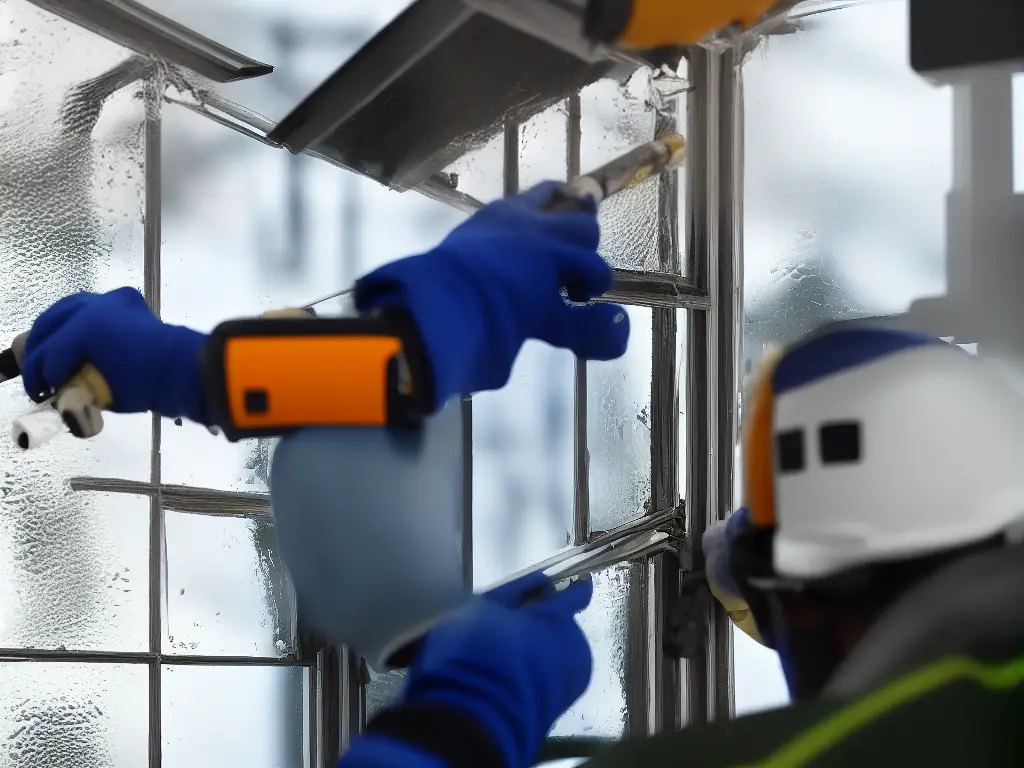
Ultimately, understanding the complex world of window glass repair and maintenance is crucial for anyone looking to preserve the structural integrity, aesthetics, and energy efficiency of their home or building. Equipped with knowledge about common causes of damage, appropriate repair techniques, and factors to consider when choosing between DIY and professional services, you can make informed decisions when faced with a window glass issue. Don’t forget the significance of proper safety precautions, window frame maintenance, and energy-efficient glass options when working to create a secure, comfortable, and efficient environment for all building occupants.